Nature is full of surprises, and these 15 incredible interactions are proof of that. From the deep blue sea to the dense rainforest, the natural world is a theater of survival, strategy, and sometimes even unlikely alliances. These fascinating dynamics of predator-prey dynamics will open your eyes and blow your mind.
1. The Cunning Cheetah And Its Elusive Gazelle

When you think of speed, the cheetah is often the first animal that comes to mind. Known as the fastest land animal, these big cats can accelerate from 0 to 60 mph in just a matter of seconds. But what makes this relationship truly fascinating is the gazelle’s ability to zigzag and make rapid turns. This prey, with its incredible agility and reflexes, often turns the chase into a dramatic dance of life and death. The gazelle’s sharp turns and sudden stops can outwit the cheetah, showcasing a battle of wits and speed. In this thrilling race, it’s not always about who runs fastest but who strategizes best.
On the flip side, cheetahs have evolved to be masters of stealth and surprise. Their slender bodies and long legs are designed for explosive energy bursts to catch unsuspecting prey. But a cheetah’s hunt is more of a sprint than a marathon; if the chase extends beyond a certain distance, they risk overheating. This delicate balance of speed and stamina adds layers to their hunting prowess. So, the next time you witness a cheetah on the prowl, remember it’s more than just a race—it’s a finely tuned game of strategy and survival.
2. The Epic Battle Of The Lion And The Wildebeest
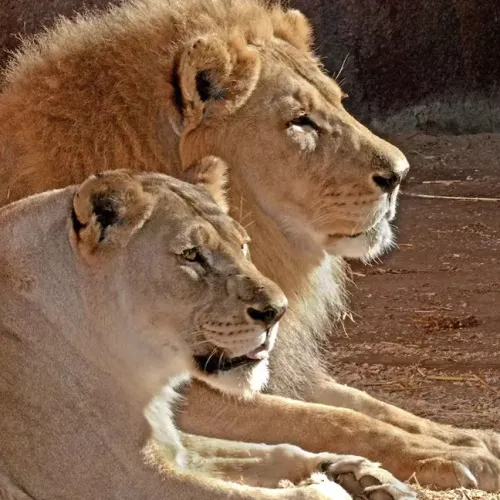
In the African savanna, lions and wildebeests engage in a timeless struggle for survival. Lions, known for their regal stature and powerful hunting skills, often target wildebeest herds during the Great Migration. This annual event is one of nature’s most spectacular phenomena, as thousands of wildebeests traverse vast landscapes in search of fresh grasslands. According to World Wildlife Fund, the Great Migration sees millions of wildebeests traverse the African savanna, where lions strategically hunt them during this remarkable event.
However, wildebeests aren’t defenseless. Their sheer numbers create a formidable barrier against predators. By sticking together, they reduce their individual risk of falling prey. Additionally, wildebeests are no strangers to danger, using their speed and strength to navigate through perilous waters and evade predators. This ongoing battle between lion and wildebeest is a testament to the resilience and adaptability of both species. As they clash in the wild, their interactions underscore the intricate balance between predator and prey in maintaining ecological harmony.
3. The Silent Stalker: Owls And Their Nocturnal Prey
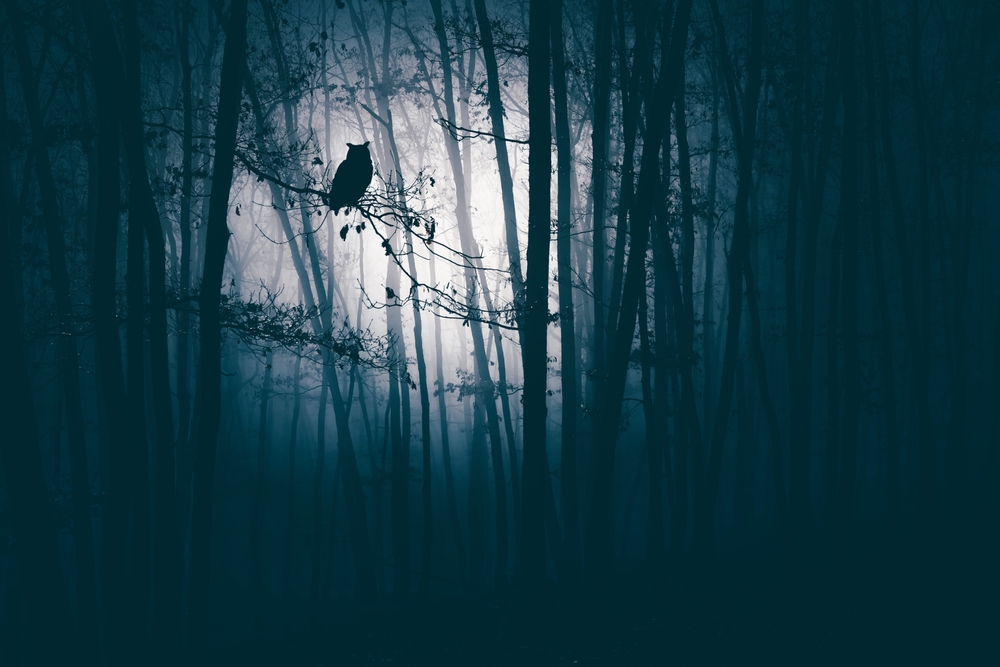
Owls, with their mysterious and mesmerizing presence, dominate the night sky as expert hunters. Their success lies in their extraordinary adaptations that allow them to silently swoop down on unsuspecting prey. Equipped with asymmetrical ears, owls can pinpoint the exact location of their target, even in complete darkness. Their soft feathers enable them to fly without making a sound, enhancing their ability to stealthily approach small mammals like mice and voles. As noted by Audubon, owls possess asymmetrical ears and silent flight, making them highly effective nocturnal hunters.
Yet, the prey isn’t entirely defenseless. Many small mammals have evolved acute senses to detect predators like owls. For instance, mice have highly sensitive whiskers that pick up vibrations from the ground, alerting them to approaching danger. Additionally, these nocturnal creatures often rely on camouflage and burrows to evade capture. The ongoing cat-and-mouse game between owls and their prey is a fascinating example of the evolutionary arms race, where both predator and prey continually adapt to outsmart each other under the cloak of darkness.
4. The Ocean’s Ambush Predators: Sharks And Seals
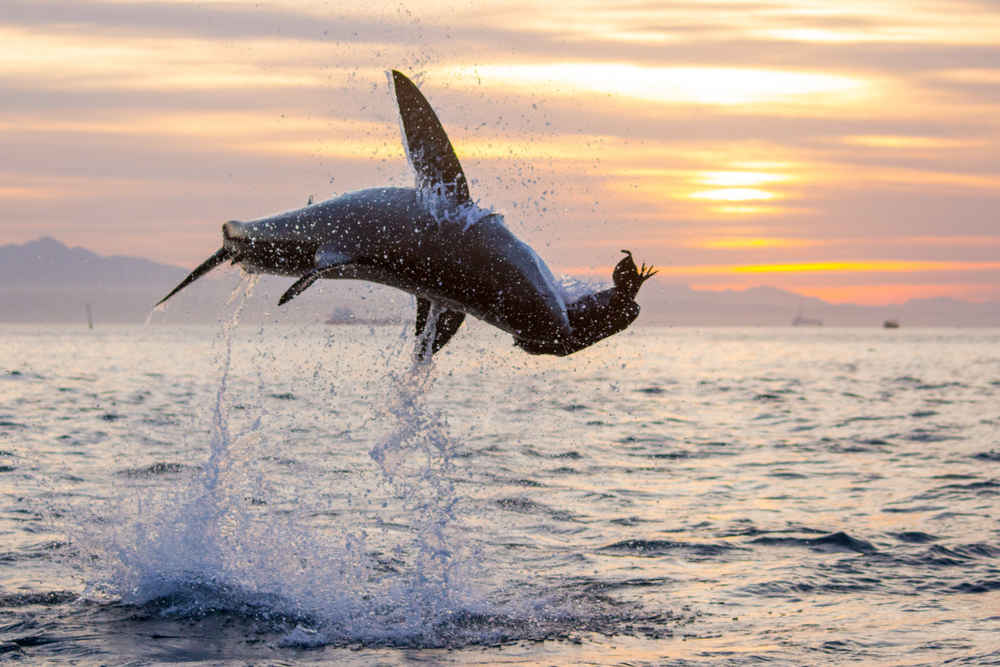
In the vast expanse of the ocean, sharks reign as apex predators with seals as their frequent targets. Great white sharks, in particular, are renowned for their stealth and power, often surprising seals with sudden, explosive attacks from below. This dramatic hunting method is known as breaching, and it’s as breathtaking as it is deadly. Sharks utilize their keen sense of smell and acute hearing to detect seals from significant distances, making them efficient hunters in the deep blue.
Seals, however, have not evolved without their own defenses. These agile marine mammals are highly social and often rely on the safety of numbers to deter predators. By swimming in large groups, they increase their chances of spotting a lurking shark before it strikes. Additionally, seals have incredibly flexible bodies that allow them to dart and weave through the water, presenting a challenging target. This underwater battle highlights the predator-prey dynamics in marine ecosystems, where each encounter is a test of agility, intelligence, and survival instincts.
5. The Deadly Dance Of The Mantis And Its Insect Prey
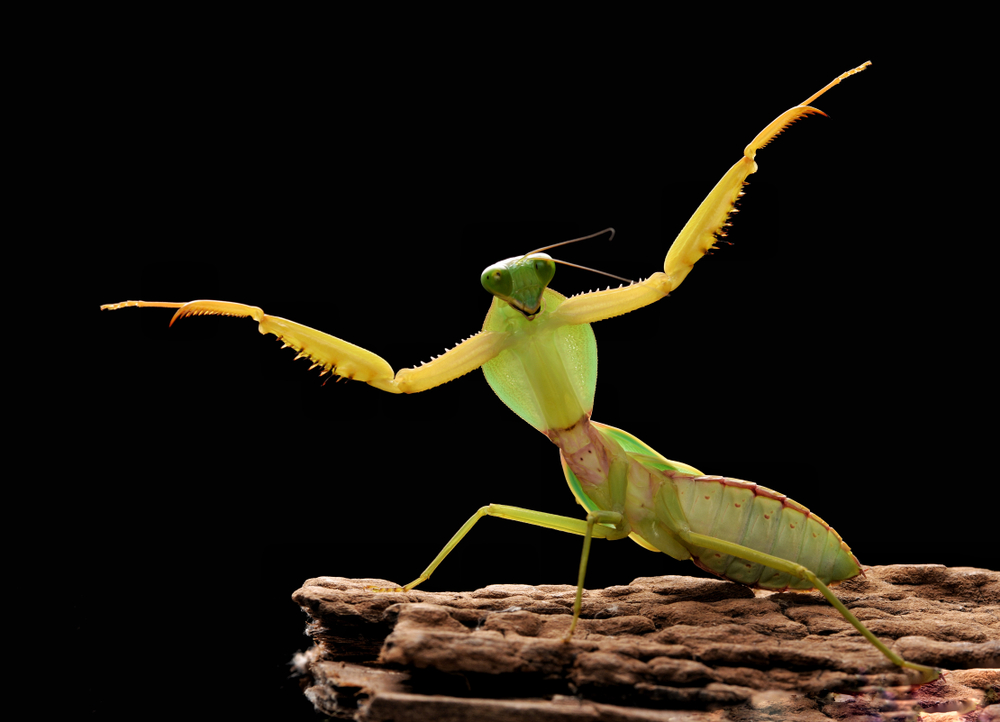
Praying mantises are renowned for their unique hunting techniques and formidable predatory skills. With their elongated bodies and raptorial forelegs, these insects are the ninjas of the insect world. They rely on camouflage to blend seamlessly into their surroundings, patiently waiting for their prey to come within striking distance. In a flash, they snatch their victim with lightning speed, showcasing their incredible reflexes. It’s a predatory spectacle that’s both mesmerizing and chilling, as the mantis transforms from stillness to action in the blink of an eye.
Yet, their insect prey isn’t entirely helpless. Many insects have developed keen senses and behaviors to avoid falling victim to the mantis’s ambush. For instance, some butterflies and moths have evolved eyespots on their wings to startle or confuse predators. Others may employ mimicry, resembling less palatable or dangerous species to deter attack. This intricate dance between predator and prey in the insect world exemplifies the constant push-and-pull of evolutionary adaptations, where survival hinges on the ability to outmaneuver and outwit one’s opponent.
6. The Fascinating Partnership Of Wolves And Elk
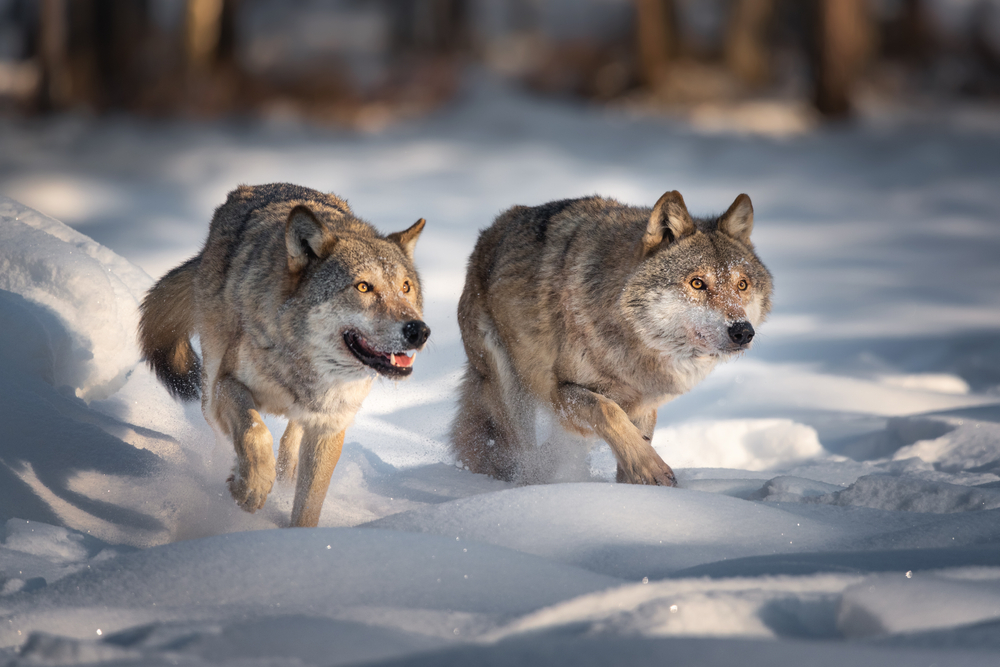
In the wild terrains of North America, wolves and elk share a complex and intriguing relationship. Wolves, with their keen sense of smell and cooperative hunting strategies, target elk as one of their primary food sources. These pack animals rely on teamwork, utilizing strategic formation to isolate and exhaust individual elk from the safety of the herd. Their howls echo through the wilderness as they communicate and coordinate their movements, demonstrating the power of cooperation in the animal kingdom.
Elk, however, have their own tactics for evading these skilled predators. As social creatures, they form large herds that provide protection and increased chances of detecting danger. Their sharp senses and swift reflexes are crucial for survival, enabling them to outpace and outmaneuver pursuing wolves. This ongoing interaction between wolves and elk is a captivating example of how predator-prey dynamics shape ecosystems. As each species adapts to the other’s strategies, they contribute to the balance and health of their shared environment.
7. The Cunning Crocodile And Its Precarious Prey
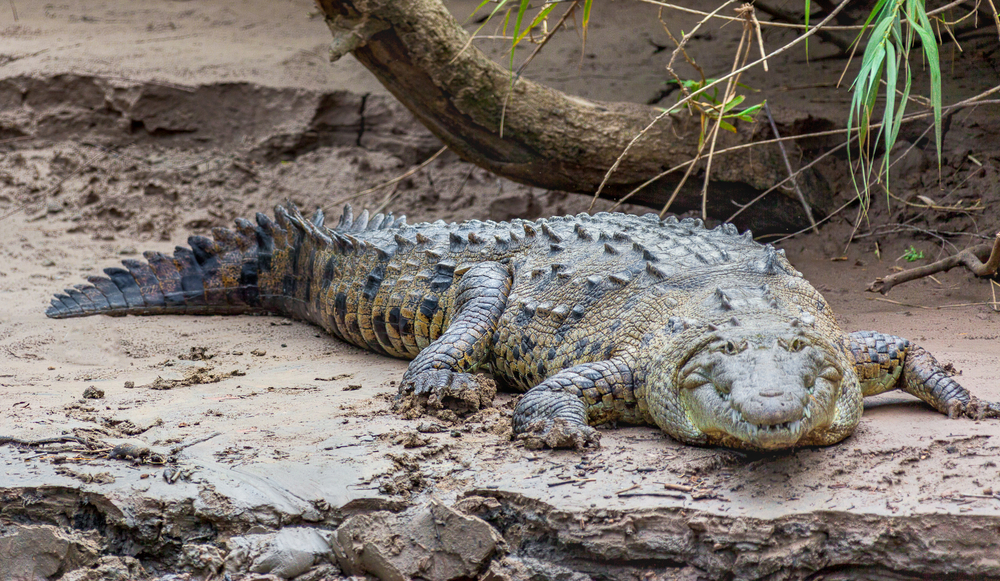
Crocodiles are ancient reptiles that have mastered the art of ambush hunting, often targeting animals that wander too close to water. With their powerful jaws and stealthy approach, they lie in wait, nearly invisible beneath the water’s surface. When an unsuspecting prey comes near, the crocodile explodes into action, using its strong tail and muscular body to snatch the victim with astonishing speed and force. This fearsome predator’s patience and power make it a formidable threat in aquatic environments.
Yet, animals like wildebeests and zebras have adapted behaviors to mitigate this threat. During migrations, these animals often cross rivers in large numbers, decreasing the likelihood of an individual being targeted. They also display heightened vigilance, scanning the water for any signs of lurking danger. This deadly game between crocodile and prey highlights the balance of power in nature, where even the most fearsome predators must rely on precision and timing to secure a meal.
8. The Ingenious Octopus And Its Evasive Prey
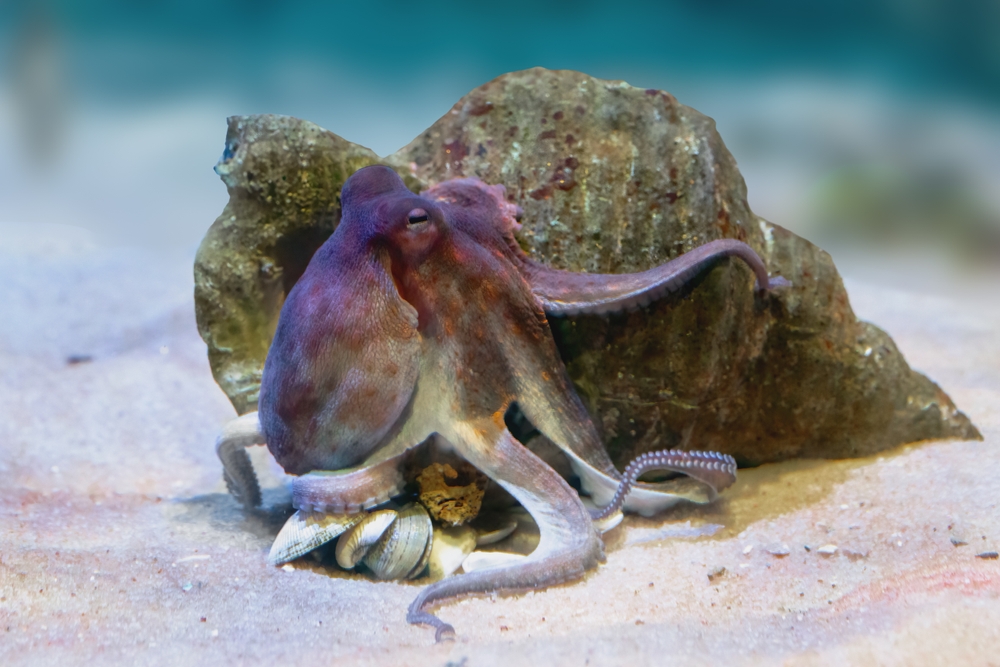
Octopuses are among the most intelligent invertebrates, renowned for their problem-solving abilities and unique hunting techniques. These cephalopods use a combination of camouflage, jet propulsion, and dexterous arms to capture various prey, from fish to crustaceans. With the ability to change color and texture, an octopus can seamlessly blend into its surroundings, waiting for the perfect moment to strike. Its flexible body allows it to squeeze into tight spaces, surprising prey that might think it’s safe in a crevice or under a rock.
Conversely, prey species have developed intriguing countermeasures. Many fish possess a lateral line system that detects movement and pressure changes in the water, alerting them to potential threats. Some crustaceans have hard shells or spines that make them less appealing targets. The constant interplay between the octopus and its prey is a testament to the evolutionary arms race, where both sides are continually adapting in an effort to survive and thrive under the sea.
9. The Relentless Wolf Spider And Its Agile Prey

Wolf spiders are known for their hunting prowess and agility, chasing down prey rather than spinning webs like many other spiders. These ground-dwelling arachnids rely on their speed and excellent vision to capture a variety of insects and small animals. With a keen sense of vibration and movement, they can accurately pounce on their prey, using their strong legs to cover ground quickly. Watching a wolf spider in action is a fascinating glimpse into the world of ground-level predation.
Yet, the spider’s prey has developed its own tactics for survival. Some insects, like grasshoppers and crickets, possess powerful hind legs that allow them to leap away at the first sign of danger. Others have evolved colors and patterns that help them blend into their surroundings, making them less visible to hunting spiders. This dynamic interaction between predator and prey on the forest floor illustrates the finely tuned balance of nature, where survival is dependent on the ability to anticipate and react to threats.
10. The Mesmerizing Jellyfish And Its Captive Prey

Jellyfish are often regarded as the drifters of the ocean, but they are effective predators, using their tentacles to capture small fish and plankton. These gelatinous creatures utilize a combination of tentacle length and stinging cells to immobilize their prey, drawing them closer to their mouth. Their pulsating movements through the water create currents that guide unsuspecting victims into their waiting tentacles. This passive yet effective hunting method allows jellyfish to thrive in various marine environments.
However, some potential prey, like certain fish species, have developed protective mucus coatings that reduce the impact of jellyfish stings. Other marine animals have learned to recognize and avoid the translucent traps drifting in the water. The relationship between jellyfish and their prey highlights the diverse strategies employed in the underwater world, where each species must constantly adapt to the challenges of survival. As enigmatic as they are captivating, jellyfish serve as a reminder of the ocean’s complex web of life.
11. The Persistent Peregrine Falcon And Its Aerial Prey
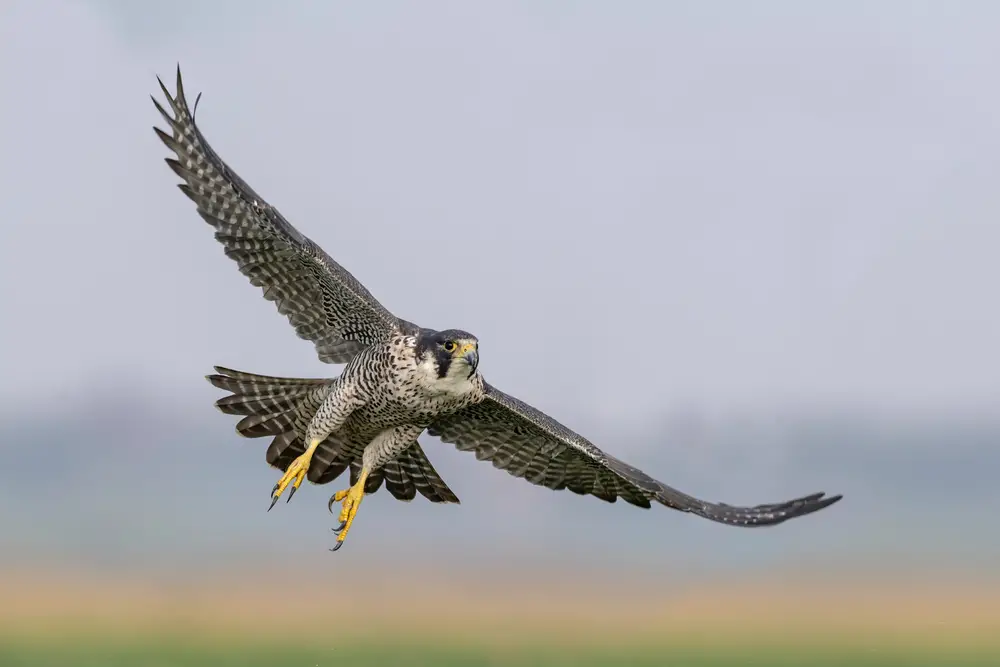
Peregrine falcons are the speed demons of the sky, capable of reaching speeds over 240 mph during their iconic hunting stoop. These magnificent birds of prey specialize in aerial hunting, targeting other birds with precision and breathtaking speed. By using gravity to their advantage, they dive from great heights, striking their prey with incredible force. Their keen eyesight allows them to spot potential targets from long distances, making them formidable hunters in the avian world.
Yet, many birds have become adept at evading these swift predators. Some species, like pigeons, rely on erratic flight patterns to throw off a falcon’s trajectory. Others may take refuge in dense foliage or flocks to confuse and deter attackers. The predator-prey dynamic involving peregrine falcons is a magnificent display of aerial agility and strategy, where each participant must continuously hone their skills to survive in the sky’s high-stakes environment.
12. The Elusive Leopard And Its Resourceful Prey
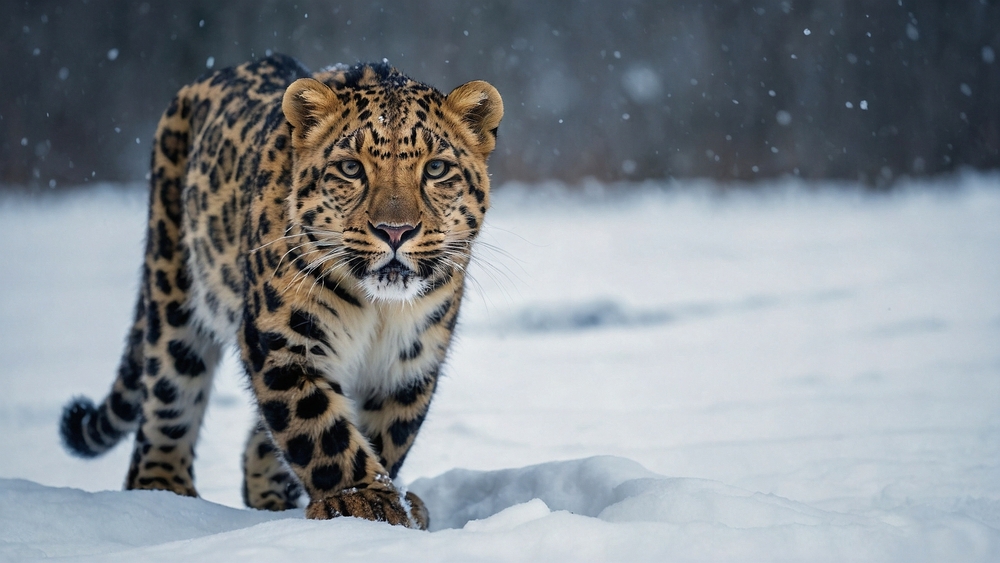
Leopards are solitary and adaptable big cats, known for their stealth and cunning in hunting a wide variety of prey. These nocturnal hunters use their camouflaged coats to blend into the environment, stalking animals like deer and monkeys with silent precision. By using the cover of darkness and strategic hiding spots, leopards can ambush their prey with minimal detection. Their powerful build allows them to drag their catch into trees, keeping it safe from scavengers and other predators.
On the other hand, their prey have evolved sharp senses and social behaviors to increase their chances of survival. Deer often form groups and use alarm calls to alert others of lurking danger. Primates rely on their intelligence and social bonds to watch for predators, seeking safety in numbers. This enduring battle between leopards and their prey showcases the intricate balance of predator-prey interactions, where each species must continually adapt to the other’s tactics in the wild.
13. The Tenacious Antlion And Its Unwary Prey
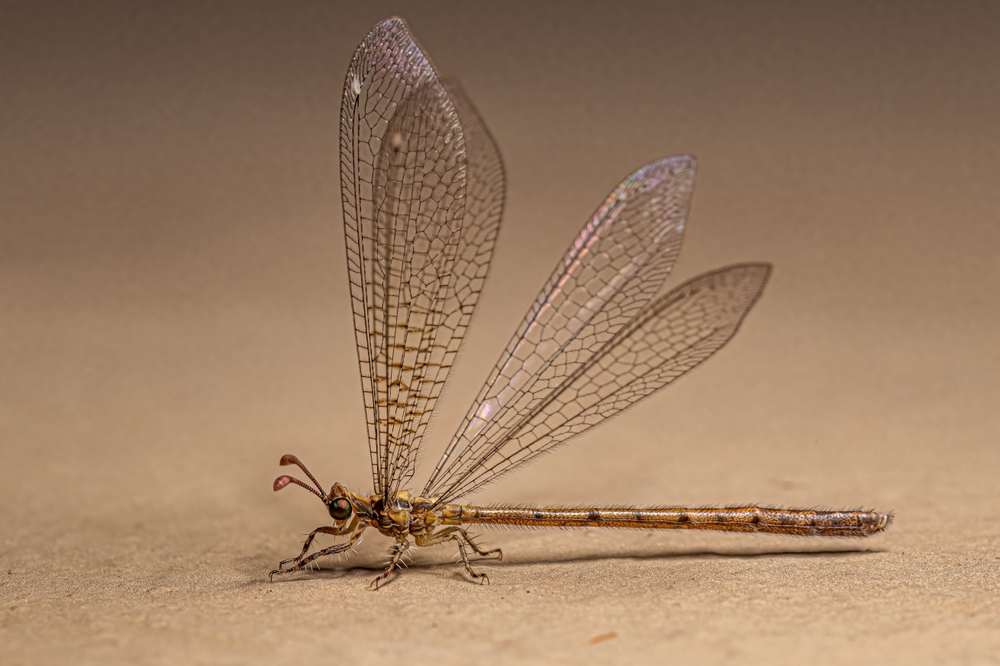
Antlions are fascinating insects that create ingenious traps for unsuspecting prey. As larvae, they dig conical pits in sandy soil, lying in wait at the bottom for ants and other small insects to stumble in. When a victim falls into the pit, the antlion uses its powerful jaws to grab and subdue it. The loose sand and steep walls make escape nearly impossible for the prey, turning the pit into an effective death trap. This crafty strategy makes antlions remarkable ambush predators despite their small size.
However, not all prey are easily caught. Some ants have developed cooperative behaviors, helping each other escape from antlion traps. By working together, they can disrupt the pit’s structure and free trapped individuals. This dynamic illustrates the ongoing arms race between predator and prey, where even the smallest creatures demonstrate complex survival strategies. The interactions between antlions and their prey highlight the incredible diversity of predation tactics in the insect kingdom.
14. The Stealthy Lynx And Its Fleeting Hare
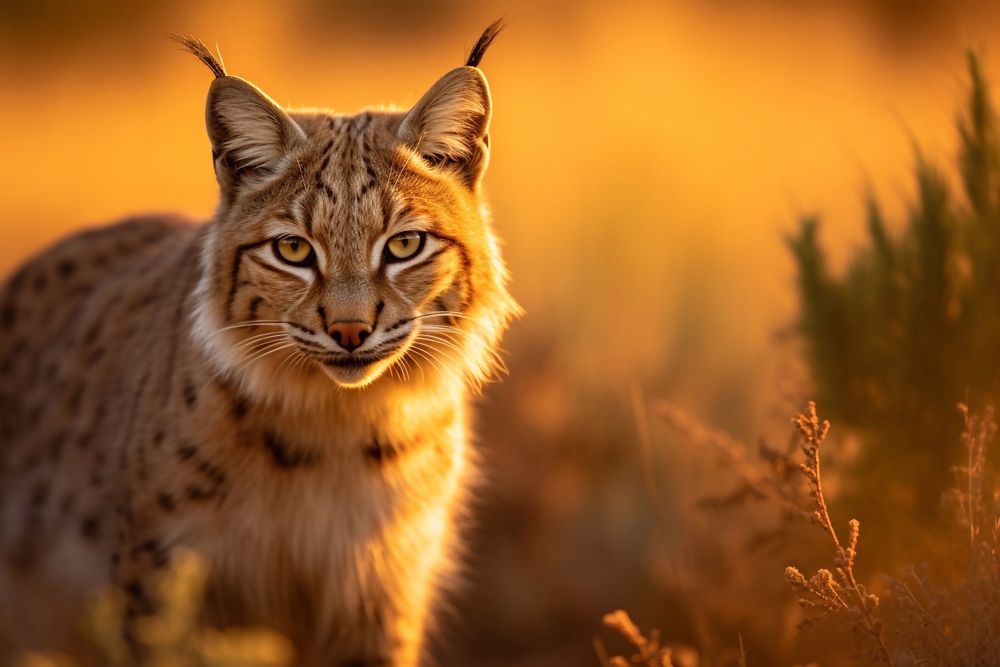
Lynxes are elusive wild cats known for their keen hunting skills and distinctive tufted ears. These solitary predators primarily target snowshoe hares, relying on their sharp senses and stealthy approach to catch their prey. With large, padded paws, lynxes can move silently and swiftly through snowy terrains, making them effective hunters in their cold habitats. Their acute hearing and vision allow them to detect even the slightest movements, ensuring that no hare goes unnoticed.
Yet, snowshoe hares have also adapted to the lynx’s predatory tactics. With seasonal coat changes, they blend into their environments, becoming challenging targets to spot. Hares are also known for their rapid and unpredictable movements, which can confuse and outmaneuver predators. The interplay between lynx and hare is a captivating example of how adaptations and counteradaptations shape the natural world, driving the evolution of both predator and prey in the relentless pursuit of survival.
15. The Daring Bat And Its Insect Prey
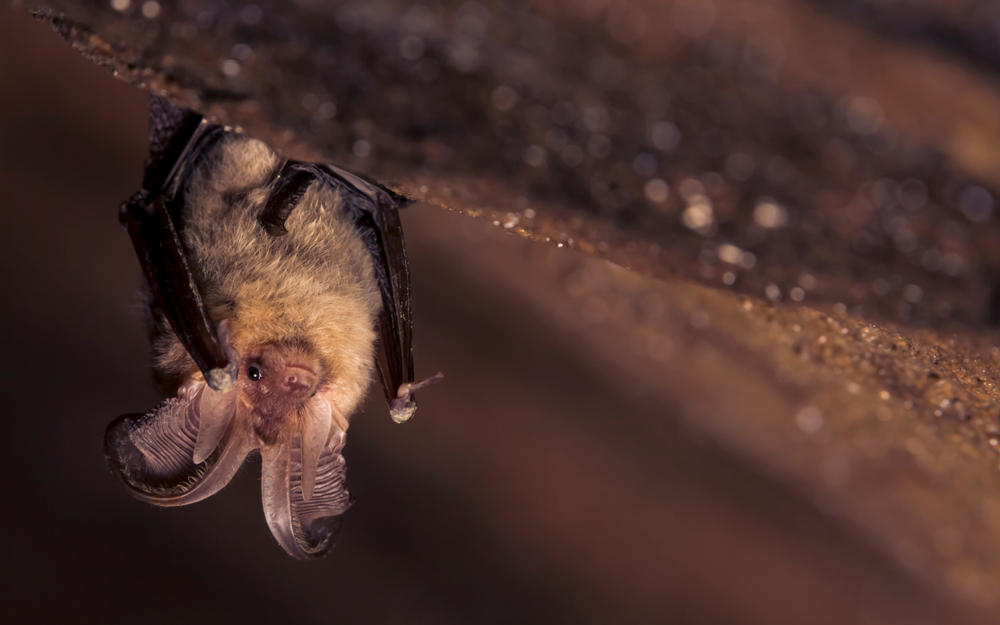
Bats are nocturnal marvels, employing echolocation to navigate and hunt in complete darkness. By emitting high-frequency sounds and listening to the returning echoes, bats can pinpoint the location of flying insects, their primary food source. This sophisticated hunting technique allows them to detect even the tiniest movements, making them formidable predators of the night sky. Their agile flight and quick reflexes enable them to snatch insects mid-air with remarkable precision.
However, some insects have developed defenses against these aerial predators. Moths, for example, have evolved to detect bat echolocation calls, enabling them to take evasive maneuvers. Some even produce their own ultrasonic clicks to interfere with a bat’s echolocation ability. This ongoing battle between bats and insects underscores the complexity of predator-prey interactions, where both sides continually refine their strategies to outwit each other in the darkened skies above.
